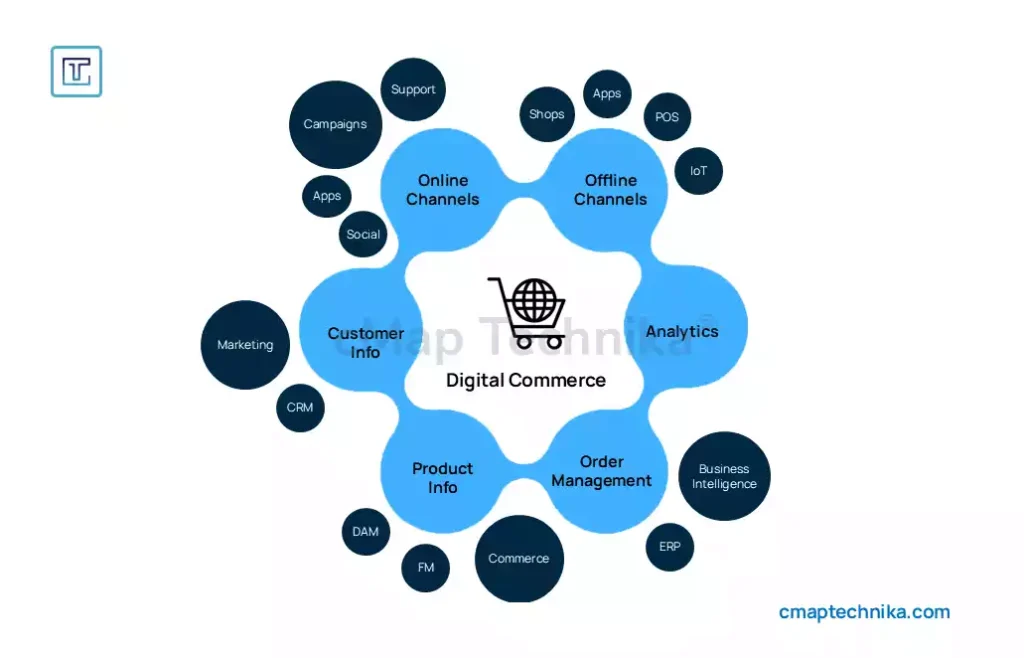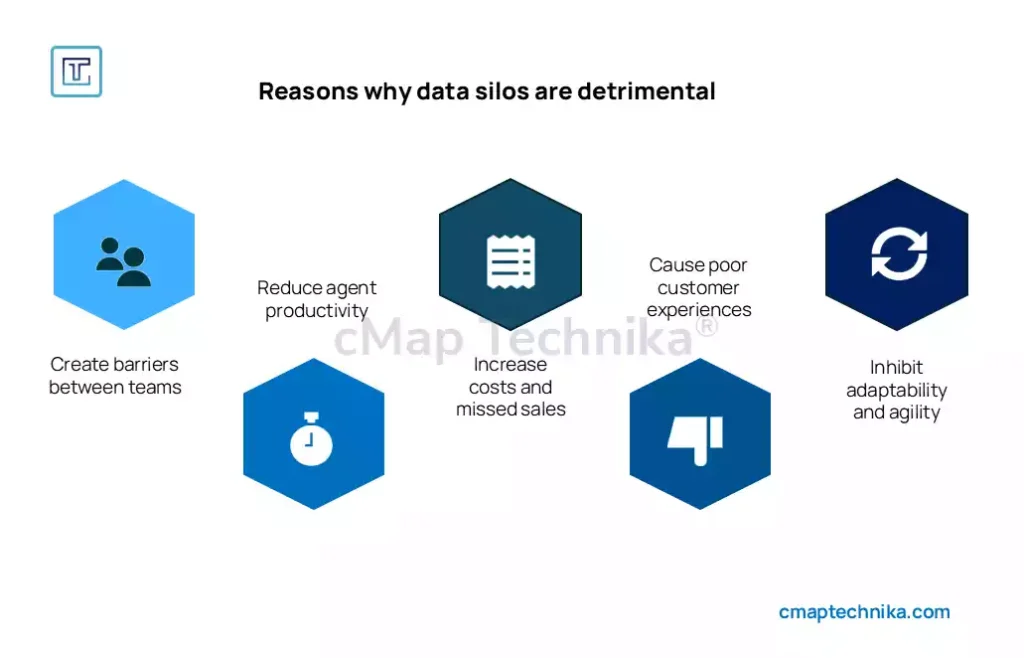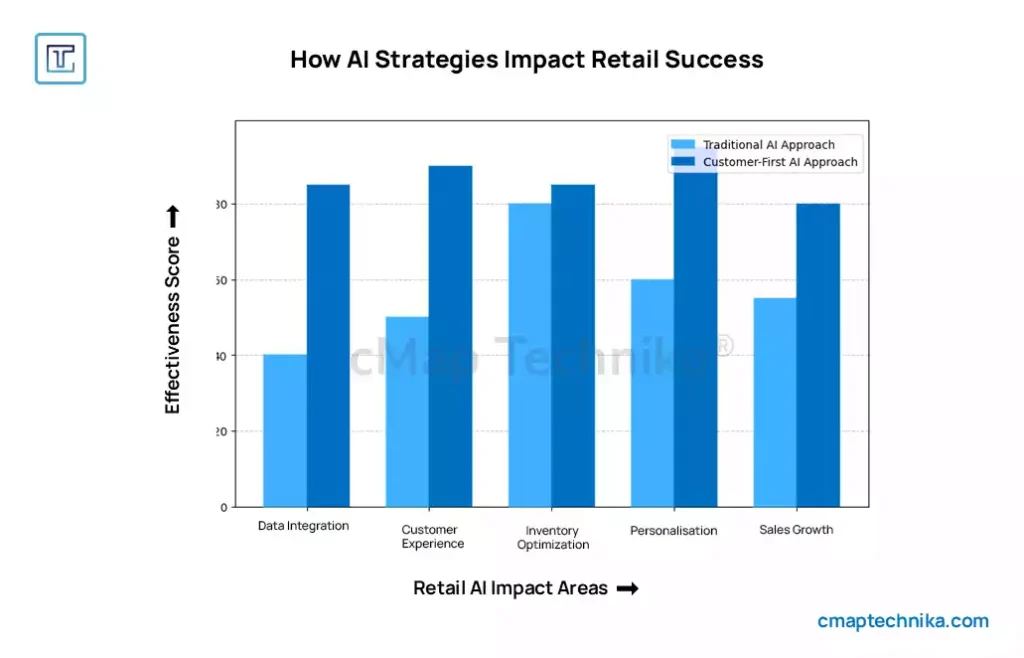Introduction

Retail has undergone a seismic shift over the past decade, driven by the rise of e-commerce, AI, and data-driven customer engagement. Despite significant technological advancements, many retailers are still struggling to capitalize on the full potential of digital transformation. The problem? Their strategies are fundamentally backwards. Instead of building AI and digital solutions around the customer experience, many retailers are retrofitting technology onto outdated business models. Leading brands that have broken this cycle are transforming their operations by adopting a customer-first, AI-driven approach that redefines how they engage with consumers, manage inventory, and deliver value.
This article explores why traditional retail AI strategies are failing, how successful brands are adapting, and what businesses can do to future-proof their operations.
The Backward Approach – Where Retailers Are Going Wrong
Many retailers have adopted AI and digital tools, but their implementation often fails to drive meaningful results. The core issue is that these solutions are applied to existing processes rather than being designed from the ground up to enhance customer experience and operational efficiency.
1. Data Silos and Fragmented Systems

One of the most common problems in retail is the fragmentation of customer data across different platforms and systems. Customer profiles, purchase history, online behavior, and in-store interactions are often housed in separate databases, making it difficult to form a unified customer view.
For example, a customer might browse products online, add them to a cart, and later visit a physical store. If the retailer’s online and offline systems aren’t integrated, the store associate won’t have visibility into the customer’s previous interactions, leading to a disconnected experience.
Case Study – Nordstrom
Nordstrom tackled this challenge by implementing a fully integrated customer relationship management (CRM) platform. The system provides a 360-degree view of each customer across all touchpoints, enabling personalized recommendations and seamless transitions between online and in-store experiences. As a result, Nordstrom increased customer retention and reported higher average order values (AOV).
2. Misguided AI and Automation Strategies
Retailers often focus AI efforts on improving efficiency rather than enhancing customer experience. Automation is frequently deployed for inventory management or reducing labor costs without considering how it impacts the customer journey.
Example – Walmart’s Smart Inventory System
Walmart initially implemented AI-based inventory tracking to optimize stock levels. However, the company soon realized that automating replenishment based solely on sales data overlooked local demand patterns and seasonal variations. After adjusting the system to integrate regional demand insights and customer behavior, Walmart improved inventory availability and reduced stockouts by over 20%.
3. Over-Reliance on Personalization Algorithms
While personalization is critical, many retailers rely too heavily on AI algorithms without accounting for context or human behavior. Personalization engines often recommend products based on previous purchases or browsing behavior, but they fail to adapt when customer preferences shift.
Case Study – Sephora
Sephora enhanced its AI-based recommendation engine by combining customer purchase data with real-time in-store behavior. If a customer buys a foundation in-store, the AI engine updates the customer’s profile and adjusts online recommendations to include complementary products like primer or setting spray. This hybrid approach increased upselling and customer satisfaction.
How Leading Brands Are Fixing the Problem
Forward-thinking retailers are adopting customer-first AI strategies that align technology with business goals and customer expectations.
1. Unified Data and Real-Time Insights
Successful retailers are investing in unified commerce platforms that consolidate customer data across channels. Real-time insights enable them to deliver personalized experiences and optimize inventory based on shifting demand patterns.
Example – Target’s Predictive Analytics
Target implemented a predictive analytics platform that analyzes customer behavior in real time to adjust product placements and promotions. If a customer searches for baby products online, the platform triggers targeted ads and product recommendations in-store, increasing conversion rates and driving higher customer engagement.
2. AI-Driven Customer Journey Mapping

AI can be leveraged not only for product recommendations but also for mapping the customer journey. Understanding how customers engage across different touchpoints enables retailers to remove friction and deliver a cohesive experience.
Case Study – Nike
Nike’s digital transformation strategy includes a comprehensive customer journey map powered by AI. The system tracks customer behavior across the Nike app, website, and physical stores. If a customer browses running shoes online but doesn’t complete a purchase, the AI system sends a targeted discount offer through the Nike app, driving higher conversion rates.
3. Dynamic Personalization Based on Context
Instead of relying solely on historical data, leading retailers are using AI to adjust recommendations in real time based on context. This includes location, weather, purchase history, and in-store behavior.
Example – Starbucks
Starbucks uses real-time data from its app to customize offers and product recommendations. If a customer is located near a store in the morning, the app might suggest a breakfast item along with their usual coffee order. This context-aware approach has increased mobile order frequency and customer retention.
Key Strategies for Retailers to Reverse the Trend
To move away from backward strategies and build AI-driven customer-centric models, retailers need to adopt the following approaches:
1. Develop a Single View of the Customer
Unify customer data across all platforms—online, in-store, and mobile—to enable a consistent and personalized experience.
2. Build AI Around the Customer, Not Operations
AI should enhance the customer journey rather than just improving operational efficiency. Prioritize AI investments that drive better customer engagement and satisfaction.
3. Enable Dynamic Personalization
Use real-time data to adjust recommendations and experiences based on context and behavior. Combine predictive analytics with adaptive algorithms for more accurate targeting.
4. Streamline Inventory and Fulfillment
Implement AI-driven demand forecasting to reduce stockouts and overstock issues. Use real-time inventory visibility to optimize product availability across channels.
Conclusion
Retailers that continue to treat AI and digital transformation as afterthoughts rather than core business drivers will struggle to remain competitive in an increasingly dynamic market. The brands that are thriving are those that have shifted from simply improving operational efficiency to building customer-first strategies powered by AI and real-time insights. By consolidating data, understanding customer behavior, and delivering seamless, personalized experiences across all channels, these leaders are setting new benchmarks in retail excellence. The future of retail lies in adaptive, customer-centric models where AI is not just a tool for automation but a strategic asset for deepening customer relationships and driving long-term growth. Retailers that embrace this shift will gain a lasting competitive edge, positioning themselves to not only survive but lead in the next era of digital commerce.






